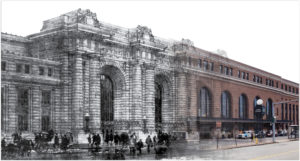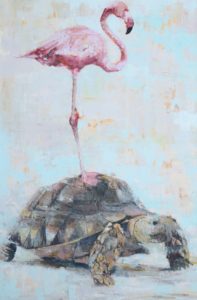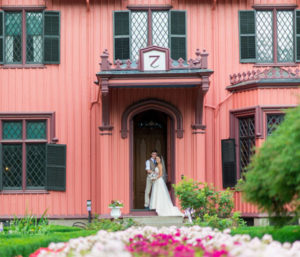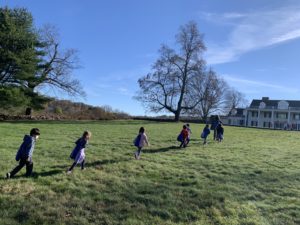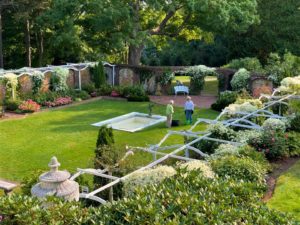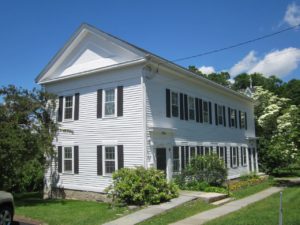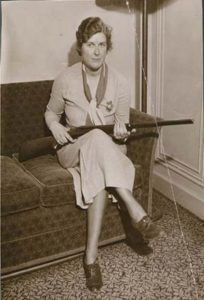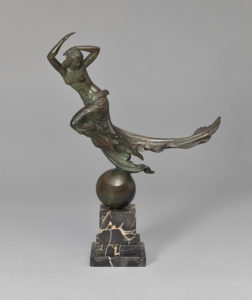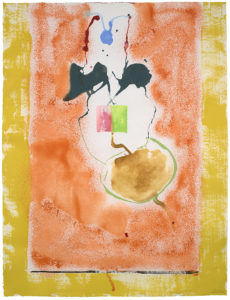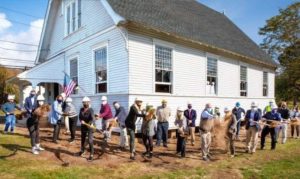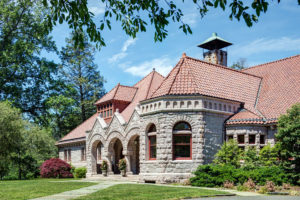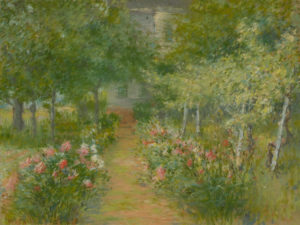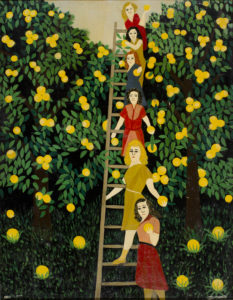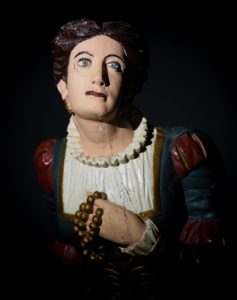Spotlight Spring 2021
NEWS & EVENTS NOT TO BE MISSED FROM CONNECTICUT EXPLORED'S PARTNERS
Given the closing of museums and historical societies last spring due to the COVID-19 pandemic please confirm program dates by visiting the museum's or historical society's website listed with each announcement.
(c) Connecticut Explored Inc. Spring 2021
Subscribe/Buy the Issue!
“New Haven Stations, Past and Present,” a virtual illustrated talk given recently by Connecticut historian Bruce Clouette, is available to view online. Visit the New Haven Preservation Trust website at nhpt.org/media to access the talk and to explore other recorded events hosted by the trust.
Selma to Montgomery Remembered
Freedom Journey 1965: Photographs of the Selma to Montgomery March by Stephen Somerstein, a special exhibition on view at the Connecticut Historical Society through June 5, features Stephen Somerstein’s stunning and historic photographs documenting the Selma to Montgomery Civil Rights March in March 1965. Somerstein was a student at City College of New York and picture editor of its student newspaper when he traveled to Alabama to document the march. He joined the marchers and gained unfettered access to everyone from Martin Luther King Jr. to Rosa Parks, James Baldwin, and Bayard Rustin. “I had five cameras slung around my neck,” he recalled. During the five-day, 54-mile march, Somerstein took about 400 photographs, including poignant images of hopeful Black Americans lining the rural roads as they cheered on the marchers walking past their front porches. The exhibition was organized by the New-York Historical Society and is on view with support from Bank of America and the Henry Nias Foundation.
Connecticut Historical Society, 1 Elizabeth Street, Hartford. chs.org; 860-236-5621
Sewing Workshop Online
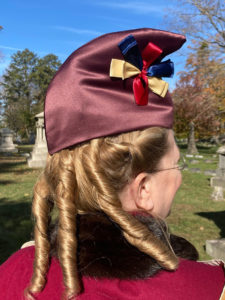 A virtual workshop, Sewing and Learning: Isabella Beecher Hooker and the Women’s Suffrage Movement, is now available online in the Harriet Beecher Stowe Center’s new multimedia gallery on its website at HarrietBeecherStoweCenter.org/media-gallery. You can learn how to create your own Phrygian-style hat and learn its history—all at no cost!
A virtual workshop, Sewing and Learning: Isabella Beecher Hooker and the Women’s Suffrage Movement, is now available online in the Harriet Beecher Stowe Center’s new multimedia gallery on its website at HarrietBeecherStoweCenter.org/media-gallery. You can learn how to create your own Phrygian-style hat and learn its history—all at no cost!
Last year the COVID-19 pandemic caused unprecedented challenges to history organizations and drastically changed the way institutions engage with audiences. Due to this, non-traditional programming emerged. One of many examples of innovation found in the museum field was the Stowe Center’s first virtual workshop, celebrated in tandem with the Women’s Suffrage Centennial, attended by a nationwide audience. The goal of the virtual program was to highlight a rare item in the Stowe Center collections and educate participants. The center also wanted to link the cap to “Craftivism,” a form of activism centered on craft-making. The center’s multi-media gallery also features podcasts, videos, and downloadable documents.
Harriet Beecher Stowe Center, 77 Forest Street, Hartford. HarrietBeecherStoweCenter.org; 860-522-9258
Almost True Tales
In Almost True Tales, on view through May 30 at the Lyman Allyn Art Museum, artist Brian Keith Stephens explores his fascination with animals as mythic symbols across time and culture. In vibrant, figurative paintings, Stephens draws on iconography, fables, and folk tales from around the world to invest his animal subjects with meaning and emotion, revealing a common cultural language that resonates with children and adults alike. At a time when the constant and omnipresent flow of information makes it harder than ever to identify what is true, Stephens’s work encourages viewers to recall the simple virtues embodied by animals in countless tales. These enduring folk wisdoms are a source of solace and a reminder that human decency can prevail and help the world to heal in even the most difficult times.
Lyman Allyn Art Museum, 625 Williams Street, New London. 860-443-2545; lymanallyn.org
Hartford Springs Into Summer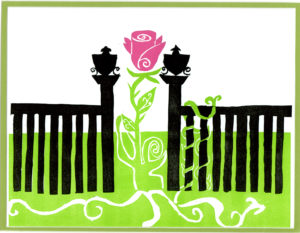
The Hartford History Center at Hartford Public Library will showcase select materials from its renowned Hartford City Parks Collection online beginning May 1. Hartford led the country in the development of municipal public parks, and early plans, blueprints, letters, photographs, herbaria, and artist interpretations of city landscapes help document that story. As the weather warms, Hartford parks bloom with the promise of summer to come. Celebrate spaces of green refuge from the COVID-exasperated isolation of the winter! Enjoy the Hartford History Center’s online display and explore further resources at hhc.hplct.org.
Subscribe to Connecticut History Review
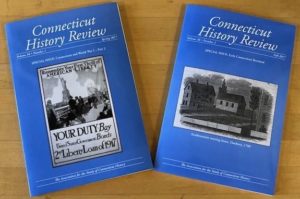 Membership in the Association for the Study of Connecticut History (ASCH) includes a subscription to the Connecticut History Review, published twice annually. The Review is the only academic, peer-reviewed journal dedicated to the history of Connecticut. For more information visit asch-cthistory.org.
Membership in the Association for the Study of Connecticut History (ASCH) includes a subscription to the Connecticut History Review, published twice annually. The Review is the only academic, peer-reviewed journal dedicated to the history of Connecticut. For more information visit asch-cthistory.org.
FACTORY Exhibition Online
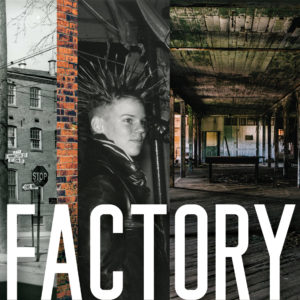 If you weren’t able to visit New Haven Museum’s FACTORY exhibition in person last year, you can still see the story in the museum’s new YouTube series “FACTORY Weekly.” Join exhibition curator Jason Bischoff-Wurstle as he highlights the exhibition and details the underground history of the New Haven Clock Company factory from the 1850s to 2000 on the New Haven Museum’s YouTube channel: youtube.com/channel/UCpELt9K7u2TcAx6JHlsD62w.
If you weren’t able to visit New Haven Museum’s FACTORY exhibition in person last year, you can still see the story in the museum’s new YouTube series “FACTORY Weekly.” Join exhibition curator Jason Bischoff-Wurstle as he highlights the exhibition and details the underground history of the New Haven Clock Company factory from the 1850s to 2000 on the New Haven Museum’s YouTube channel: youtube.com/channel/UCpELt9K7u2TcAx6JHlsD62w.
Using original and archival video, photography, and artifacts, FACTORY tells how the former New Haven Clock Company factory survived urban renewal efforts to house a variety of visual and performance artists, punk bands, skateboarders, and music and adult-entertainment clubs from the 1970s to the 2000s. The exhibition features local people, personalities, and artistic endeavors once present in the building. If you ask around, practically everyone in New Haven has a story about the old Clock Factory. Read Jason’s story, “The Reinvention of the New Haven Clock Company Factory,” Spring 2020.
New Haven Museum, 114 Whitney Avenue, New Haven. newhavenmuseum.org, 203-562-4183
American-Made Gifts
 The Betts Store (Wilton Historical Society’s museum shop), like the original 18th-century Betts Store, features locally-made and one-of-a-kind items, many of which are hand-crafted. Discover uncommon gifts for all occasions, from jewelry, scarves, and puzzles to books and letterpress note cards. Find an excellent selection of home accessories and hostess gifts, such as unusual candles, clocks, birdhouses, mobiles, soaps, artwork, mugs, vases, cups, and trays. All items for sale are made in the U.S.A.
The Betts Store (Wilton Historical Society’s museum shop), like the original 18th-century Betts Store, features locally-made and one-of-a-kind items, many of which are hand-crafted. Discover uncommon gifts for all occasions, from jewelry, scarves, and puzzles to books and letterpress note cards. Find an excellent selection of home accessories and hostess gifts, such as unusual candles, clocks, birdhouses, mobiles, soaps, artwork, mugs, vases, cups, and trays. All items for sale are made in the U.S.A.
The Betts Store stocks nicely crafted classic wooden toys such as Jacob’s Ladders, fun games like jacks and marbles, plus craft kits and other unexpected treasures in the children’s section. The definitive history Wilton, Connecticut: Three Centuries of People, Places and Progress by Bob Russell is always in stock. It is easy to shop online, and contactless pick-up in person or shipping to your home is available.
Wilton Historical Society, 224 Danbury Road/Route 7, Wilton. 203-762-7257; wiltonhistorical.org
Take a Virtual Tour
When Mark Twain moved into his new house in Hartford, he said, “It is a home—& the word never had so much meaning before.” You can take a virtual tour of the house anytime and enjoy many of its virtual programs on the Mark Twain House & Museum’s website.
Samuel and Olivia “Livy” Clemens married in 1870 and moved to Hartford in 1871. In 1873‚ they engaged New York architect Edward Tuckerman Potter to design their house on Farmington Avenue. Livy had strong opinions about the design; she drew sketches and sought the counsel of trusted friends. Construction began in August 1873. The family enjoyed what Twain would later call the happiest and most productive years of his life there. He wrote: “To us, our house was not unsentient matter—it had a heart, and a soul, and eyes to see us with; … and we were in its confidence, and lived in its grace and in the peace of its benediction.”
The Mark Twain House & Museum, 351 Farmington Avenue, Hartford. 860-247-0998; marktwainhouse.org
From Swamp to Greenspace
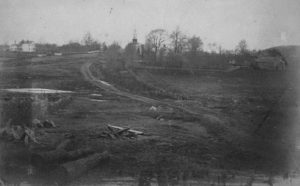 More than 300 years ago the land that would become the Lebanon Green was a rock-filled alder swamp that English settlers designated as the “broad street.” Town records, individual recollections, maps, and photographs document its gradual evolution from rugged and nearly useless land to the bucolic hayfields and public space of today.
More than 300 years ago the land that would become the Lebanon Green was a rock-filled alder swamp that English settlers designated as the “broad street.” Town records, individual recollections, maps, and photographs document its gradual evolution from rugged and nearly useless land to the bucolic hayfields and public space of today.
Visit the Lebanon Historical Society’s Facebook page facebook.com/HistoryofLebanon to explore the 19th-century changes in land management and use that reshaped this central feature of Lebanon’s landscape. Other “Lebanon Stories” essays explore various aspects of the town’s past, from Revolutionary War heroes to 19th-century missionaries in Hawaii and Syria and 20th-century Christmas traditions.
The Lebanon Historical Society Museum is open to visitors by appointment only. Please call 860-642-6579 or e-mail museum@historyoflebanon.org to schedule a gallery visit or request research assistance.
Lebanon Historical Society Museum, 856 Trumbull Highway, Lebanon. 860-642-6579; historyofLebanon.org
Meet Adam Jackson
 Connecticut Landmarks’s Hempsted Houses in New London introduce visitors to Adam Jackson, one of the most well-documented enslaved people in Connecticut history, and his family’s quest for freedom. New England’s slaveholding history continues to influence our communities today. Through a collection of virtual conversations, Site Administrator Olivia Sayah has been working hard to put current issues into historical context with the help of historians and activists.
Connecticut Landmarks’s Hempsted Houses in New London introduce visitors to Adam Jackson, one of the most well-documented enslaved people in Connecticut history, and his family’s quest for freedom. New England’s slaveholding history continues to influence our communities today. Through a collection of virtual conversations, Site Administrator Olivia Sayah has been working hard to put current issues into historical context with the help of historians and activists.
The AskAnActivist series features conversations with members of local activist groups to inspire learning about current issues in the community, explore initiatives that seek to solve them, and share ways for people to get involved. Last fall the Hempsted Houses hosted a new history in aCTion virtual event series addressing topics surrounding racial trauma, environmental racism, and abolition. Join us for the continuation of both series during CTL’s 2021 season. To access the virtual programming follow the Hempsted Houses on Facebook at facebook.com/HempstedHouses or visit ctlandmarks.org.
New Connecticut-Based Memoir
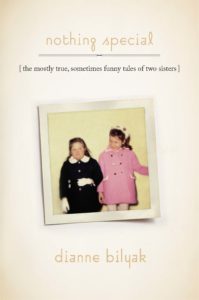 Nothing Special is a disarmingly candid tale of two sisters growing up in the 1970s in rural Connecticut. Older sister Chris, who has Down syndrome, is a charming extrovert, while the author, her younger, typically-developing sister, shoulders the burdens of their parents. Bilyak details their lives in heartrending and hilarious vignettes. Coming from Wesleyan University Press in March 2021. Visit hfsbooks.com/books/nothing-special-bilyak/.
Nothing Special is a disarmingly candid tale of two sisters growing up in the 1970s in rural Connecticut. Older sister Chris, who has Down syndrome, is a charming extrovert, while the author, her younger, typically-developing sister, shoulders the burdens of their parents. Bilyak details their lives in heartrending and hilarious vignettes. Coming from Wesleyan University Press in March 2021. Visit hfsbooks.com/books/nothing-special-bilyak/.
For Your Special Day
Roseland Cottage in Woodstock offers a unique and beautiful setting for weddings and other private parties. From May through October, the grounds and perennial gardens are lovely for events held outside or in the Carriage House. For more information contact RoselandFunctions@HistoricNewEngland.org.
Students Inspired
Every year, Hill-Stead Museum hosts more than 6,000 students from elementary schools to high schools and universities. Hill-Stead’s impressive collection of paintings by Monet, Degas, Whistler, Manet, and Cassatt, with the natural surroundings of the 152-acre estate, engages students and captures their imaginations. Hill-Stead embarks on a transformative chapter in 2021, developing innovative programs and taking future exhibitions and special initiatives to new heights.
Hill-Stead Museum, 35 Mountain Road, Farmington. Hillstead.org; 860-677-4787
Tourist in Your Own Town!
 Explore West Hartford history through a scavenger hunt and weekly video tours. “Noah’s Navigators” scavenger hunt uses word puzzles and games to send participants to locations in West Hartford Center and Blue Back Square. Puzzle books are available in the gift shop for $20 each. The Armchair Tour of West Hartford History video series highlights a new story at a different local site each week.
Explore West Hartford history through a scavenger hunt and weekly video tours. “Noah’s Navigators” scavenger hunt uses word puzzles and games to send participants to locations in West Hartford Center and Blue Back Square. Puzzle books are available in the gift shop for $20 each. The Armchair Tour of West Hartford History video series highlights a new story at a different local site each week.
Noah Webster House & West Hartford Historical Society, 227 South Main Street, West Hartford. 860-521-5362; noahwebsterhouse.org
Gardens Spring Back to Life
Spring is a perfect time to visit Keeler Tavern Museum & History Center in Ridgefield. While the museum is closed for tours during the pandemic, the grounds are open to the public daily from dawn to dusk. While visiting, take advantage of a self-guided outdoor tour, “Gilberts in the Gardens,” (use your smartphone and QR codes to download a site map and the walking tour stops) to learn more about the history of the gardens, including the Walled Garden and Rose Arbor, designed by early-20th-century architect Cass Gilbert (above). A committee of museum volunteers maintains the gardens, which are coming back to life in the spring. Although the historic Tavern Museum is currently closed to visitors, you can still see a British cannonball lodged in the corner post on the north side. Visible behind a piece of plexiglass, it’s a memento of the Battle of Ridgefield, the only land battle fought in Connecticut during the Revolutionary War.
Keeler Tavern Museum & History Center, 152 Main Street, Ridgefield. Keelertavernmuseum.org; 203-438-5485
Environmental Protection of Historic Resources
Did you know that historic preservation is an environmental activity? Many of the laws and regulations that protect our natural environment have provisions to protect the historic environment, too. For instance, environmental reviews prepared under the National Environmental Policy Act or Connecticut Environmental Policy Act (CEPA) must consider the impact of proposed projects on both natural and historic resources.
In addition, the CEPA provides for lawsuits to prevent the unreasonable destruction of both natural resources and historic resources listed on the National Register of Historic Places. Currently the State of Connecticut and Preservation Connecticut are weighing possible actions under CEPA to protect historic buildings in Stamford, Bridgewater (pictured), and Manchester.
Preserving historic buildings is a good example of sustainability—it’s recycling on a big scale. As proponents of historic preservation know, the greenest building is one that is already built!
For more about protecting Connecticut’s historic places visit Preservation Connecticut at preservationct.org or the State Historic Preservation Office at portal.ct.gov/DECD/Services/Historic-Preservation.
Board of Fisheries and Game Records
State Archives Record Group 079:003 at the Connecticut State Library contains a wealth of historic information. The collection of records from the State Board of Fisheries and Game contains correspondences regarding prohibition, warden files, minutes, and photographs dating back to 1911. Photographs in the collection are primarily black and white and include warden activities such as predator control, game breeding, conservation activities, warden training, and state lands. More recent photographs come from the department’s Law Enforcement Unit.
The photograph above is of Connecticut’s Edith A. Stoehr, one of the first female game wardens in the United States. She was believed to be the only woman to attend the Twentieth Annual Game Conference in New York. She was selected by the Connecticut Board of Fisheries and Game in spring 1933 after she won a fly-casting contest on the Branford River in North Branford. This collection is a subgroup of the Department of Energy and Environment Protection (DEEP).
Connecticut State Library, 231 Capitol Avenue, Hartford. Ctstatelibrary.org; 860-757-6500
Ancient and Modern
Paul Manship’s sculpture visually defines a melding of ancient and modern sensibilities. One of America’s most celebrated sculptors of the early 20th century, Manship is known for major public commissions such as Prometheus at Rockefeller Center in New York City and the Rainey Memorial Gates at the Bronx Zoo. The Wadsworth Atheneum Museum of Art presents Paul Manship: Ancient Made Modern from February 11 to July 3. Manship spent his student years at the American Academy in Rome. His time there was the foundational chapter in a long career, when his ideas and working methods were deeply influenced by the ancient works he studied. Upon his return to New York City his dramatic, energetic bronze sculptures reinterpreted the past for the modern age, attracting critical acclaim. Together with his signature bronzes, associated sketches and ancient artifacts illuminate how Manship became a master of sampling imagery and melding disparate visual elements from multiple cultural traditions.
Wadsworth Atheneum Museum of Art, 600 Main Street, Hartford. Thewadsworth.org; 860-278-2670
Frankenthaler’s Late Works
Renowned artist Helen Frankenthaler’s late works are on view through May 23 at New Britain Museum of American Art. Frankenthaler, whose career spanned six decades, has long been recognized as one of the greatest American artists of the 20th century. She was eminent among the second generation of postwar American abstract painters and is widely credited for playing a pivotal role in the transition from Abstract Expressionism to Color Field painting.
Helen Frankenthaler Late Works, 1990–2003, the museum’s first presentation dedicated to the exploration of works from the artist’s later life, will feature approximately 22 works on paper—some measuring more than 6 feet. The exhibition is curated by Douglas Dreishpoon, director of the Helen Frankenthaler Catalogue Raisonne and chief curator emeritus of the Albright-Knox Art Gallery, with loans from the collection of the Helen Frankenthaler Foundation. (See “Anni Albers and Helen Frankenthaler in Connecticut,” Summer 2020.)
New Britain Museum of American Art, 56 Lexington Street, New Britain. Nbmaa.org; 860-229-0257
Announcement for Historic Restoration Fund Grant
The State Historic Preservation Office (SHPO) is shifting the Historic Restoration Fund program to a semi-annual application schedule. Historic Restoration Fund (HRF) grants are matching, reimbursement grants of up to $100,000 available to Connecticut municipalities and 501(c)3 and 501(c)13 nonprofits. Eligible grant activities include capital projects, archaeological site preservation, and the stabilization or repair of properties listed on the state or national Register of Historic Places. The grants are funded through the Connecticut Community Investment Act (also known as Public Act 05-228), which has allotments for historic preservation, open space, farmland preservation, and affordable housing. Grants will be awarded on a competitive basis. Applications must be submitted by May 1, 2021 to be considered at the July 1, 2021 Historic Preservation Council meeting and by November 1, 2021 to be considered at the January 1, 2022 meeting. Please contact Erin at Erin.Fink@ct.gov to schedule a virtual pre-application meeting.
Help Restore 125-year-Old Roof
Work has begun to replace Pequot Library’s original 125-year-old Ludowici terracotta tile roof. With support from the State Historic Preservation Office, a comprehensive conditions assessment of the library identified repair of the historic roof as an urgent priority. The $1.5 million project is needed not only to preserve the entire structure, but also to protect the library’s Special Collections of rare books, manuscripts, and archives. With fundraising underway, Pequot Library has embarked on replacing the historic tiles, original underlayment, gutters, and flashing. Ohio-based Ludowici—still in business manufacturing terracotta tiles—began in 1888, the year before Pequot Library was founded and six years before the library opened to the public in 1894. Pirie Associates Architects and Kronenberger and Sons Restoration are overseeing the project, which is expected to be completed in 2021. You can help. Please visit pequotlibrary.org/roof to learn more and to sponsor a tile for as little as $50.
Pequot Library, 720 Pequot Avenue, Southport. pequotlibrary.org, 203-259-0346
Exhibitions Mark Anniversaries
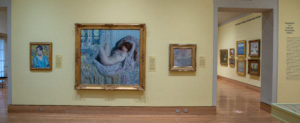 In 2001 The Hartford Steam Boiler Inspection and Insurance Company donated its art collection of 190 works to the Florence Griswold Museum. To celebrate the 20th anniversary of this transformative gift, the museum presents Expanding Horizons: Celebrating 20 Years of the Hartford Steam Boiler Collection. The exhibition features highlights from the collection with an emphasis on new methods of research and interpretation. Commemorating these past 20 years, 20 leading art historians re-examined 20 works through the lenses of environmental art history, material culture, landscape studies, and issues of identity, such as gender and race.
In 2001 The Hartford Steam Boiler Inspection and Insurance Company donated its art collection of 190 works to the Florence Griswold Museum. To celebrate the 20th anniversary of this transformative gift, the museum presents Expanding Horizons: Celebrating 20 Years of the Hartford Steam Boiler Collection. The exhibition features highlights from the collection with an emphasis on new methods of research and interpretation. Commemorating these past 20 years, 20 leading art historians re-examined 20 works through the lenses of environmental art history, material culture, landscape studies, and issues of identity, such as gender and race.
A second exhibition, Centennial of the Lyme Art Association Gallery, pays tribute to the landmark anniversary of our neighbor and sister institution by partially recreating its1921 inaugural exhibition with works by Lucien Abrams, William Henry Howe, and Lydia Longacre, among others. Both exhibitions are on view through May 23.
Florence Griswold Museum, 96 Lyme Street, Old Lyme. 860-434-5542; florencegriswoldmuseum.org
Springtime in the Garden
To mark the coming of spring, the Greenwich Historical Society will present Greenwich Gardens and Landscapes, Past and Present, April 28 to September 5. The exhibition will explore the vibrant legacy of the people who designed, worked in, and found delight and inspiration in Greenwich gardens. Drawing from the historical society’s rich collections of rarely seen garden landscape design drawings, dried botanical specimens, garden and horticultural books, and original works of art by garden-loving artists of the Cos Cob Art Colony of American Impressionism, the exhibition will offer a glimpse at the splendid landscapes designed for Greenwich’s Gilded Age great estates, along with more modest backyard gardens planted for food and personal enjoyment.
Visitors will also have the opportunity to tour Greenwich Historical Society’s reimagined historic campus, including heritage vegetable gardens, a historic grape arbor, and Impressionist era floral gardens. Outdoor concerts, farmer’s markets, and gardening and art workshops will be held throughout the spring and summer.
Greenwich Historical Society, 47 Strickland Road, Cos Cob. Greenwichhistory.org; 203-869-6899
Landscapes Then and Now
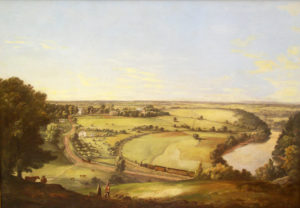 By searching on Google Earth for Lisbon, Connecticut, one can acquire a current aerial view of the scene depicted in the 1850s in John Denison Crocker’s “Edward Tracy Farm” (above). All of the landmarks Crocker included in this sweeping oil on canvas are present: the river with its undulating curves, the railroad tracks running parallel to the river, and the dirt road that became State Route 12. Much of the arable land is still farmed today, but this view is now obscured by the addition of retail sprawl. Many of Crocker’s paintings trace the environmental evolution of Norwich and its environs from principally agrarian to industrial use through the 19th century and commercial use into the 20th century. On view in the Slater Museum (now re-opened) are many more canvases by Crocker documenting the environment as it was 150 years ago.
By searching on Google Earth for Lisbon, Connecticut, one can acquire a current aerial view of the scene depicted in the 1850s in John Denison Crocker’s “Edward Tracy Farm” (above). All of the landmarks Crocker included in this sweeping oil on canvas are present: the river with its undulating curves, the railroad tracks running parallel to the river, and the dirt road that became State Route 12. Much of the arable land is still farmed today, but this view is now obscured by the addition of retail sprawl. Many of Crocker’s paintings trace the environmental evolution of Norwich and its environs from principally agrarian to industrial use through the 19th century and commercial use into the 20th century. On view in the Slater Museum (now re-opened) are many more canvases by Crocker documenting the environment as it was 150 years ago.
Slater Memorial Museum, 108 Crescent Street, Norwich. 860-887-2506; slatermuseum.org
Explore the Amistad Center Collection
Collector Randolph Linsly Simpson said, “It is my hope that all who view this collection now and explore its many facets in the years to come will find in its unity extraordinary educational value. By doing this, all of us may reaffirm our commitment to equality, dignity, and respect for all ethnic groups.”
Originating in a farmhouse in Northford, Connecticut, the Simpson Collection, named after Randolph Linsly Simpson, was purchased by The Amistad Center for Art & Culture in 1987 to form the center’s permanent collection. Simpson devoted his life to collecting and elevating African American art, artifacts, and ephemera from the 17th through the 19th century. The Amistad Center has added to this dynamic collection to include contemporary works of art. Through the Looking Glass, a special exhibition opening March 11, explores the progression of the collection and underscores its relevance to the here and now.
The Amistad Center for Art & Culture at the Wadsworth Atheneum Museum of Art, 600 Main Street, Hartford. AmistadCenter.org; 860-838-4089
Figureheads Revisited
After more than 40 years, Mystic Seaport Museum’s figureheads exhibition has received a makeover. Through a generous grant from the Henry Luce Foundation, curators re-imagined this visitor favorite with a new installation, Figureheads & Shipcarvings.
Ship’s figureheads were an important form of public art in the 19th century. A figurehead gave a ship its personality, and each one expressed a unique meaning, imbued with values and reflecting popular culture of the time. The exhibition reinterpretation aims to help visitors see these objects through 19th-century eyes and to understand and appreciate the craft of carving and figureheads as an important art form.
The new exhibition showcases the depth and breadth of the museum’s carving collections. In addition to figureheads, it features other 19th-century ship carvings, shop figures, and a new acquisition, a magnificent carousel hippocampus.
Mystic Seaport Museum, 75 Greenmanville Avenue, Mystic. Mysticseaport.org; 860-572-0711

